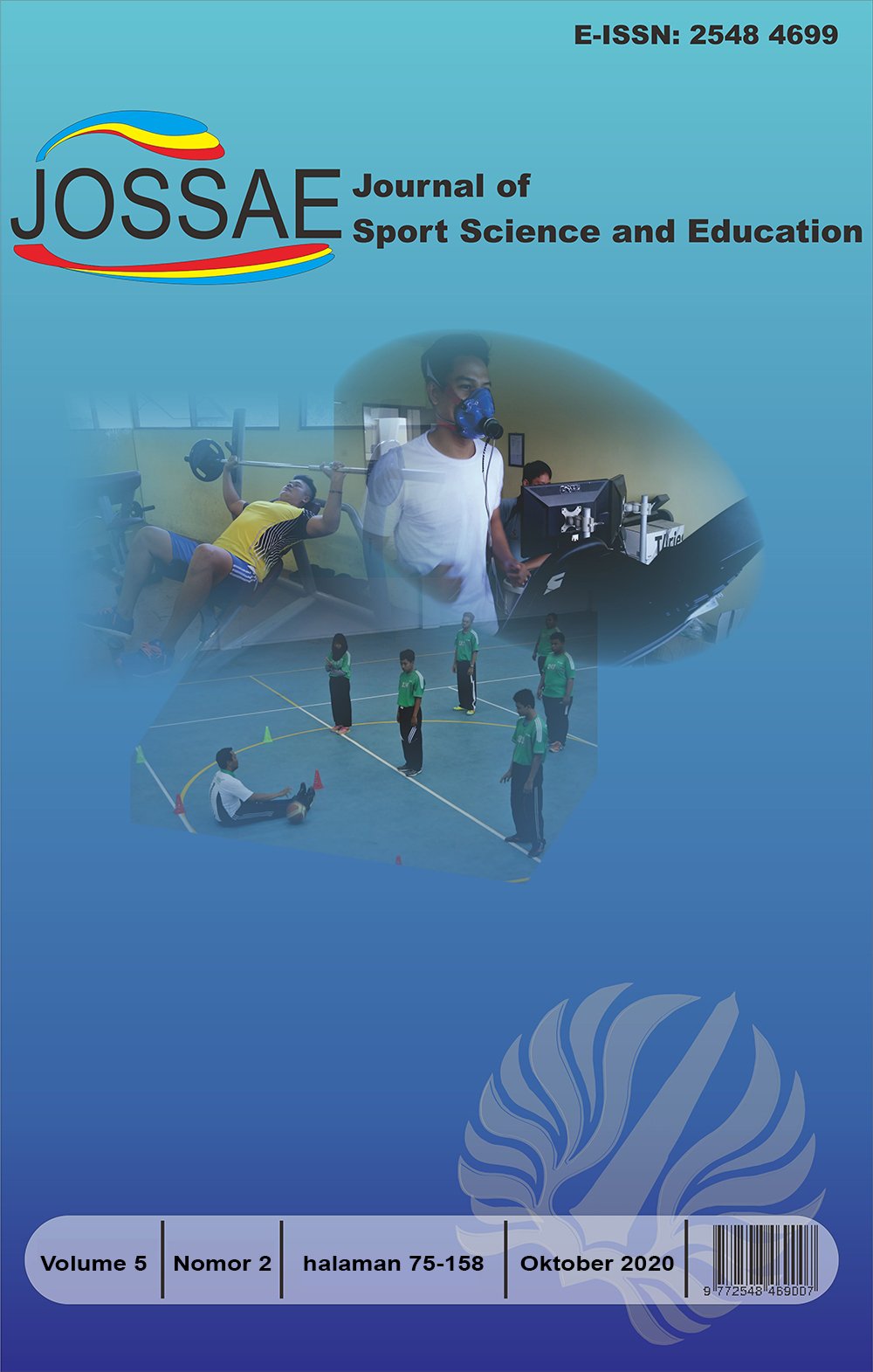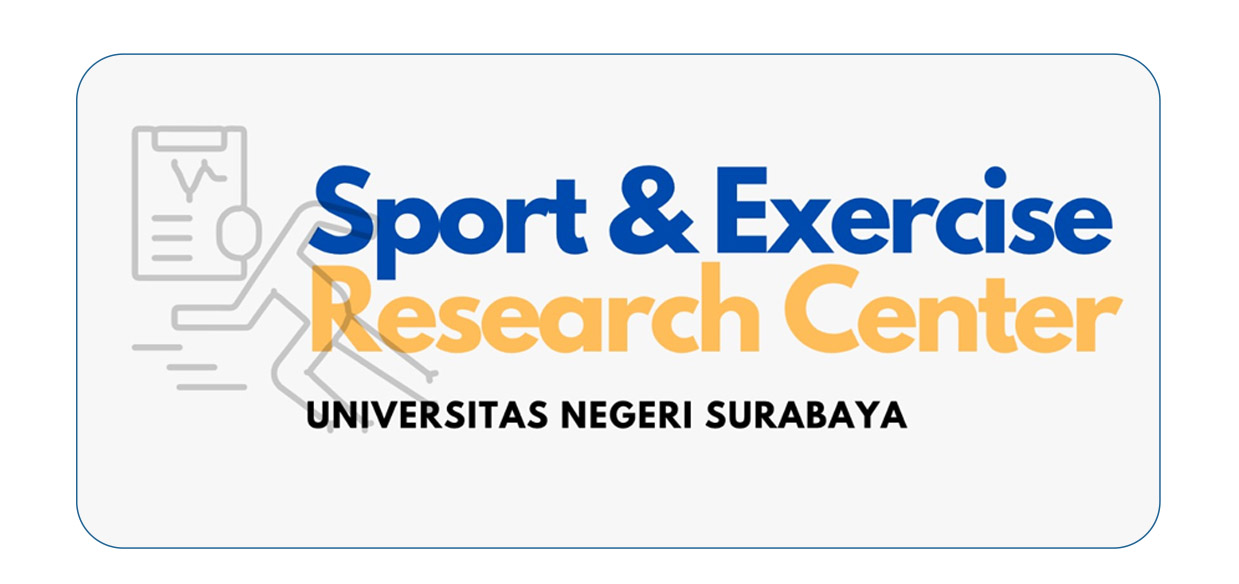VO2max Berkorelasi Negatif dengan Kemampuan Tahan Nafas (Apnea)
DOI:
https://doi.org/10.26740/jossae.v5n2.p139-147Keywords:
apnea, breath, diving, freedive, VO2maxAbstract
Free diving (freedive) depends on the ability to hold the breath (apnea). Apnea is thought to have a correlation with the body's ability to consume oxygen (VO2max). This research aims to study the correlation between VO2max and apnea ability. Subjects in this study were men aged 20-25 years as many as 36 people. VO2max measured using MFT test, while the measurement of apnea ability is represented by the duration of apnea as measured by the duration of sitting still under water. The results of one-way correlation tests were found to be p<0.05, which means there was a correlation between VO2max and apnea duration. While the correlation coefficient of -0.44 shows that the direction of the correlation is negative with the strength of the correlation is weak. From these results it can be concluded that the higher VO2max there is a tendency for apnea ability to be lower.
References
Candrawati, S., Gumilas, S. A., Rujito, L., & Ardiansyah, I. R. (2019). The relationship between ACTN3 gene polymorphism with VO2 max and flexibility. 12007. https://doi.org/10.1088/1742-6596/1246/1/012007
E. Barrett, K., M. Barman, S., Boitano, S., & L. Brooks, H. (2012). Ganong Buku Ajar Fisiologi Kedokteran (24th ed.). McGraw-Hill Companies.
Farrell, E. (2006). One Breath: A Reflection on Freediving. London: Pynto.
Fernández, F. D. A., González-Ravé, J. M., & Juárez, D. (2017). Breath-hold diving performance factors. Journal of Human Sport and Exercise, 12(3), 582592. https://doi.org/10.14198/jhse.2017.123.03
Giancoli, D. C. (2014). PHYSICS Basic Principles with Applications. In Functional Analysis (7th ed.). California: Pearson Education, Inc.
Giriwijoyo, H. Y. S. S. (2017). Fisiologi Kerja dan Olahraga. Jakarta: Rajawali Pers.
Glazer, T. A., & Telian, S. A. (2016, Maret-April). Otologic Hazards Related to Scuba Diving. Sports Health, 140-144.
Hoppeler, H. (1990). The different relationship of V̇O2 to muscle mitochondria in humans and quadrupedal animals. Respiration Physiology, 80(23), 137145. https://doi.org/10.1016/0034-5687(90)90077-C
Leger, L. A., Mercier, D., Gadoury, C., & Lambert, J. (1988). The multistage 20 metre shuttle run test for aerobic fitness. Journal of Sports Sciences, 6(2), 93101. https://doi.org/10.1080/02640418808729800
Lindholm, P., & Lundgren, C. E. (2009). The physiology and pathophysiology of human breath-hold diving. Journal of Applied Physiology, 106(1). Retrieved from http://jap.physiology.org/content/106/1/284.short
Ostrowski, A., Strzala, M., Stanula, A., Juszkiewicz, M., Pilch, W., & Maszczyk, A. (2012). The Role of Training in the Development of adaptive Mechanisms in Freedivers. Journal of Human Kinetics, 32, 197-210.
Palar, C. M., Wongkar, D., & Ticoalu, S. H. (2015, Januari-April). Manfaat Latihan Olahraga Aerobik Terhadap Kebugaran Fisik Manusia. Jurnal e-Biomedik, 3, 316-321.
Paradisis, G. P., Zacharogiannis, E., Mandila, D., Smirtiotou, A., Argeitaki, P., & Cooke, C. B. (2014). Multi-Stage 20-m Shuttle Run Fitness Test, Maximal Oxygen Uptake and Velocity at Maximal Oxygen Uptake. Journal of Human Kinetics, 41(1), 8187. https://doi.org/10.2478/hukin-2014-0035
Pearn, J. H., Franklin, R. C., & Peden, A. E. (2015). Hypoxic blackout: Diagnosis, risks, and prevention. International Journal of Aquatic Research and Education, 9(3), 342347. https://doi.org/10.1123/ijare.2015-0036
Putra, K. P., Al Ardha, M. A., Kinasih, A., & Aji, R. S. (2017). Korelasi Perubahan Nilai VO2Max, Eritrosit, Hemoglobin dan Hematokrit Setelah Latihan High Intensity Interval Training. Jurnal Keolahragaan, 5(2), 161170.
Putra, K. P., Pratama, R. P., & Nugroho, K. P. A. (2020). Kapasitas Vital Paru Berkorelasi Positif dengan Kemampuan Tahan Napas pada Laki-Laki Usia 19-25 Tahun. JOSSAE¯: Journal of Sport Science and Education, 5(1), 25. https://doi.org/10.26740/jossae.v5n1.p25-32
Sastroasmoro, S., & Ismael, S. (2011). Dasar-dasar Metodologi Penelitian Klinis (4th ed.). Jakarta: Sagung Seto.
Schmidt, W., & Prommer, N. (2010). Impact of Alterations in Total Hemoglobin Mass on V˙O2max. Exercise and Sport Sciences Reviews, 38(2), 6875. https://doi.org/10.1097/JES.0b013e3181d4957a
Schwerzmann, K., Hoppeler, H., Kayar, S. R., & Weibel, E. R. (1989). Oxidative capacity of muscle and mitochondria: Correlation of physiological, biochemical, and morphometric characteristics. Proceedings of the National Academy of Sciences of the United States of America, 86(5), 15831587. https://doi.org/10.1073/pnas.86.5.1583
Sherwood, L. (2015). Fisiologi Manusia: Dari Sel ke Sistem (8th ed.; D. R. Herman Octavius Ong, Albertus Agung Mahode, ed.). Jakarta: EGC.
Shete, A. N., Bute, S. S., & Deshmukh, P. . (2014). A Study of VO2 Max and Body Fat Percentage in Female Athletes. Journal of Clinical and Diagnostic Research, 8(12), BC01BC03. Retrieved from /pmc/articles/PMC4316241/?report=abstract
Sugiyono, &. S. (2015). Cara Mudah Belajar SPSS & Lisrel, Teori dan Aplikasi untuk Analisa Data Penelitian. Bandung: Alfabeta.
West, J. B. (2005). Robert Boyles landmark book of 1660 with the first experiments on rarified air. Journal of Applied Physiology, 98(1), 3139. https://doi.org/10.1152/japplphysiol.00759.2004
Warganegara, R. K. (2015, Januari). Arikel Review: The Comparation Of Lung Vitalapacity in Various Sport Athlete. Jurnal Majority. Lampung: Fakultas Kedokteran Universitas Lampung.
Widhiarso, W. (2010). Prosedur Uji Linearitas pada Hubungan antar Variabel. Yogyakarta: Fakultas Psikologi UGM.
Downloads
Published
How to Cite
Issue
Section
 Abstract views: 893
,
Abstract views: 893
, PDF Downloads: 1150
PDF Downloads: 1150









